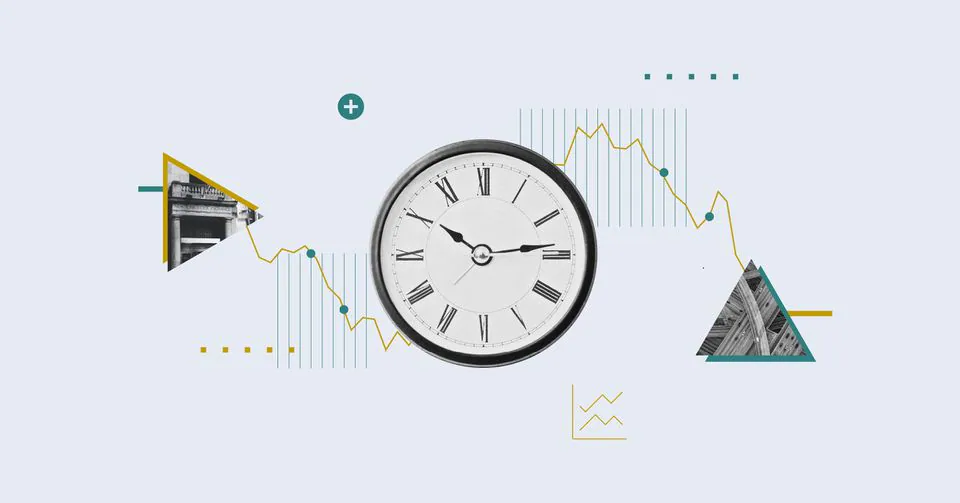Have you ever found yourself meticulously preparing a trading strategy, only to second-guess your decisions when it comes time to execute? If so, it’s possible that you’ve succumbed—without even knowing it—to a trading bias.
Trading biases are a form of cognitive bias, a term first coined in 1972 by Israeli psychologists Amos Tversky and Daniel Kahneman to describe errors in thinking, judgment, and decision-making that can arise when processing and interpreting information.
In the fast-moving world of financial markets, traders often find themselves grappling with trading biases that can lead to suboptimal choices and, ultimately, financial losses. Identifying these biases, knowing how they manifest, and understanding their effects can go a long way toward helping minimize or even eliminate their impact on a trader’s performance.
Confirmation bias: The risk of selective reinforcement
Perhaps one of best-known trading biases is confirmation bias—the tendency to seek out and favor information that aligns with preexisting beliefs while disregarding contradictory evidence. Confirmation bias can lead to an echo chamber effect, where traders focus on information that supports their trade positions.
Impact: Confirmation bias can make you overly optimistic about your trades, causing you to disregard vital warning signs that suggest a change in market sentiment. This trading bias might lead you to hold onto losing positions for longer than necessary, hoping for a turnaround that may never materialize.
Solution: Counteracting confirmation bias requires cultivating a habit of seeking diverse sources of information and deliberately challenging your assumptions. Actively engage with contrary viewpoints and encourage colleagues to provide critical feedback on your trade analyses.
Recency bias: A mirage of the past
Recency bias stems from the human tendency to assign greater significance to recent events and experiences while undervaluing historical data. In the stock market, this bias can lead to a shortsighted approach where traders focus on the most recent market trends, ignoring the broader context.
Impact: Traders falling prey to recency bias might overreact to short-term market fluctuations, leading to impulsive decisions that ignore long-term market trends. This may cause you to miss out on lucrative opportunities that require a more patient and comprehensive analysis.
Solution: To counteract recency bias, familiarize yourself with historical market activity and study past chart patterns and trends. By maintaining a broader perspective that encompasses both short-term and long-term data, you can make more informed decisions that align with your overall strategy.
Overconfidence: The downside of self-confidence
Overconfidence bias involves an inflated sense of your abilities, leading you to believe you possess a higher level of skill and knowledge than you actually do. In trading, overconfidence can manifest as an excessive willingness to take on risks without fully weighing the potential consequences.
Impact: Overconfident traders might engage in overly aggressive trading practices, like increasing your position size beyond your capacity to manage the risk. This could lead you to sustain a large loss on a relatively small move in the underlying stock or security.
Solution: To combat overconfidence, maintain a levelheaded approach by continuously assessing your trading strategies and seeking feedback from peers or mentors. In addition, maintaining a journal of past trades and their outcomes can serve as a reality check, highlighting areas where overconfidence may have clouded your judgment.
Sunk costs: Avoiding the “double down” trap
The sunk cost fallacy points out that individuals tend to justify further investment in a decision or action based on the resources they have already committed—even when evidence suggests the decision is no longer rational. This bias is particularly relevant in trading, where traders might hold onto or add to losing positions in a misguided attempt to recoup their losses.
Impact: Sunk costs can lead you to pour more capital into losing trades, hoping to recover your initial investments rather than cutting your losses. This approach can tie up valuable resources and hinder the exploration of more promising opportunities.
Solution: You can overcome the sunk cost fallacy by adopting a detached perspective on your trades. Evaluate each trade based on its current potential for profitability rather than focus on recouping past losses. Establishing predetermined stop-loss points and adhering to them can also help you avoid falling into the trap of sunk costs.
Correlation vs. causation: The false web of association
The correlation-causation bias involves assuming a cause-and-effect relationship between two variables based solely on their correlation, without considering other potential factors. In trading, this bias can lead to mistaken interpretations of market trends and influences.
Impact: You might make erroneous predictions or base decisions on unfounded assumptions about causation, leading to misguided investments and losses. Relying solely on surface-level correlations can prevent you from uncovering the underlying dynamics of the market.
Solution: Overcome this bias by conducting thorough research and analysis to identify true causal relationships. By considering a wide range of potential influencing factors, you can make more accurate predictions and informed decisions.
How to deal with trading biases
Cognitive biases take a variety of shapes and forms and can affect all facets of life. Here are a few more that tend to regularly manifest as trading biases—as well as some techniques to help minimize their impact.
- Anchoring bias: Overweighting the first information you hear. For example, a friend tells you that XYZ stock will double in the next year, which you then use as justification to hold the stock as it goes lower.
- Bandwagon effect: Adopting a belief or taking action because others do. Similar to groupthink, buying a stock because “everyone else is buying it” is an example of the bandwagon effect.
- Outcome bias: Evaluating a decision, after the fact, based on the outcome. If you take a high-risk trade, and it’s profitable, you might convince yourself that it was a wise decision based on the favorable outcome. But a bad-odds decision that works out was still a bad-odds decision.
- Ostrich effect: Actively avoiding negative information or information that conflicts with your beliefs. An example of this would be avoiding looking at news, charts, or your positions on days when the stock market is down.
- Blind spot bias: Failing to recognize your own cognitive biases and how they impact your trading.
Overcoming trading biases requires conscious effort, discipline, and a commitment to ongoing self-awareness. Here are a few strategies to help:
- Find diverse information sources. Actively seek out information and viewpoints that challenge your existing beliefs to help broaden your perspective and mitigate confirmation bias.
- Practice analytical rigor: Approach trading decisions with a structured analysis that incorporates historical data, long-term trends, and a comprehensive evaluation of risks.
- Keep good records: Maintain meticulous records of trades, outcomes, and decision-making processes to identify patterns of bias and track your progress.
- Get peer feedback: Engage with colleagues, mentors, or trading communities to gain valuable feedback and alternative viewpoints on trading strategies.
The bottom line
By understanding these and other trading biases, you can better prepare yourself to navigate the complexities of the financial markets. Armed with this awareness—and the strategies to counteract these biases—you can enhance your analytical skills, refine your decision-making processes, and position yourself for better success in the ever-changing world of trading.
Source: Brian Lund, Fact Checked by Doug Ashburn, Britannica Money.
How we help
We can help take the effort out of this for you by demonstrating how this would work for you and your family and providing you with one cohesive Holistic Lifestyle Financial Plan.
You can arrange a meeting by clicking here to access my diary, email info@smartfinance.ie or call 087 8144 104.







